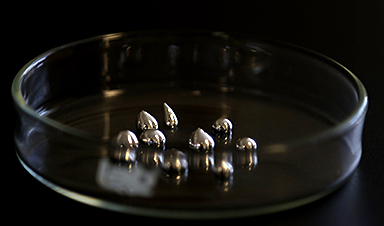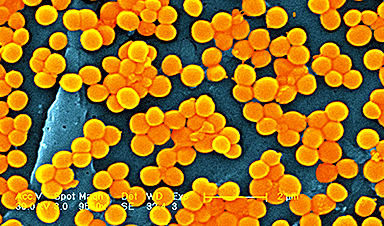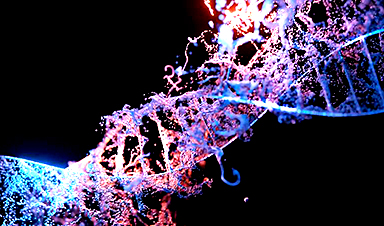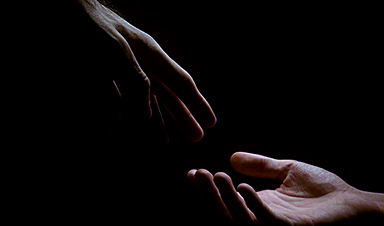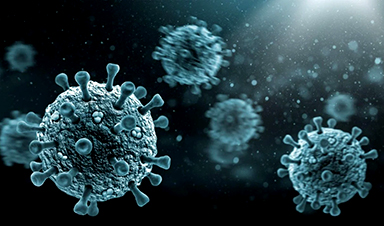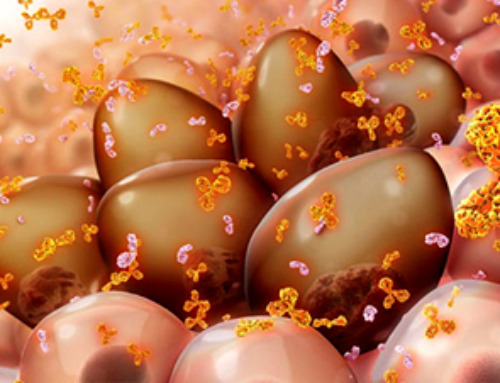Liquid metals could be the long-awaited solution to “greening” the chemical industry, according to researchers who tested a new technique they hope can replace energy-intensive chemical engineering processes harking back to the early 20th century.
Findings published in Nature Nanotechnology offer a much-needed innovation that moves away from old, energy-intensive catalysts made from solid materials. The research is led by Professor Kourosh Kalantar-Zadeh, Head of the University of Sydney’s School of Chemical and Biomolecular Engineering, and Dr. Junma Tang, who works jointly at the University of Sydney and UNSW.
A catalyst is a substance that makes chemical reactions occur faster and more easily without participating in the reaction. Solid catalysts, typically solid metals or solid compounds of metals, are commonly used in the chemical industry to make plastics, fertilizers, fuels and feedstock.
However, chemical production using solid processes is energy intensive, requiring temperatures of up to a thousand degrees centigrade.
The new process instead uses liquid metals, in this case dissolving tin and nickel which gives them unique mobility, enabling them to migrate to the surface of liquid metals and react with input molecules such as canola oil. This results in the rotation, fragmentation, and reassembly of canola oil molecules into smaller organic chains, including propylene, a high-energy fuel crucial for many industries.
“Our method offers an unparalleled possibility to the chemical industry for reducing energy consumption and greening chemical reactions,” said Professor Kalantar-Zadeh.
“It’s expected that the chemical sector will account for more than 20% of emissions by 2050,” said Professor Kalantar-Zadeh. “But chemical manufacturing is much less visible than other sectors—a paradigm shift is vital.”
How the process works
Atoms in liquid metals are more randomly arranged and have greater freedom of movement than solids. This allows them to easily come into contact with, and participate in, chemical reactions. “Theoretically, they can catalyze chemicals at much lower temperatures—meaning they require far less energy,” Professor Kalantar-Zadeh said.
In their research, the authors dissolved high melting point nickel and tin in a gallium based liquid metal with a melting point of only 30° centigrade.
“By dissolving nickel in liquid gallium, we gained access to liquid nickel at very low temperatures—acting as a ‘super’ catalyst. In comparison solid nickel’s melting point is 1,455° centigrade. The same effect, to a lesser degree, is also experienced for tin metal in liquid gallium,” Dr. Tang said.
The metals were dispersed in liquid metal solvents at the atomic level. “So we have access to single atom catalysts. Single atom is the highest surface area accessibility for catalysis which offer a remarkable advantage to the chemical industry,” said Dr. Arifur Rahim, senior author and DECRA Fellow at the School of Chemical and Biomolecular Engineering.
The researchers said their formula could also be used for other chemical reactions by mixing metals using the low temperature processes.
“It requires such low temperature to catalyze that we could even theoretically do it in the kitchen with the gas cooktop—but don’t try that at home,” Dr. Tang said.
More information: Dynamic configurations of metallic atoms in the liquid state for selective propylene synthesis, Nature Nanotechnology (2023). DOI: 10.1038/s41565-023-01540-x
Journal information: Nature Nanotechnology
News
How the FDA opens the door to risky chemicals in America’s food supply
Lining the shelves of American supermarkets are food products with chemicals linked to health concerns. To a great extent, the FDA allows food companies to determine for themselves whether their ingredients and additives are [...]
Superbug crisis could get worse, killing nearly 40 million people by 2050
The number of lives lost around the world due to infections that are resistant to the medications intended to treat them could increase nearly 70% by 2050, a new study projects, further showing the [...]
How Can Nanomaterials Be Programmed for Different Applications?
Nanomaterials are no longer just small—they are becoming smart. Across fields like medicine, electronics, energy, and materials science, researchers are now programming nanomaterials to behave in intentional, responsive ways. These advanced materials are designed [...]
Microplastics Are Invading Our Arteries, and It Could Be Increasing Your Risk of Stroke
Higher levels of micronanoplastics were found in carotid artery plaque, especially in people with stroke symptoms, suggesting a potential new risk factor. People with plaque buildup in the arteries of their neck have been [...]
Gene-editing therapy shows early success in fighting advanced gastrointestinal cancers
Researchers at the University of Minnesota have completed a first-in-human clinical trial testing a CRISPR/Cas9 gene-editing technique to help the immune system fight advanced gastrointestinal (GI) cancers. The results, recently published in The Lancet Oncology, show encouraging [...]
Engineered extracellular vesicles facilitate delivery of advanced medicines
Graphic abstract of the development of VEDIC and VFIC systems for high efficiency intracellular protein delivery in vitro and in vivo. Credit: Nature Communications (2025). DOI: 10.1038/s41467-025-59377-y. https://www.nature.com/articles/s41467-025-59377-y Researchers at Karolinska Institutet have developed a technique [...]
Brain-computer interface allows paralyzed users to customize their sense of touch
University of Pittsburgh School of Medicine scientists are one step closer to developing a brain-computer interface, or BCI, that allows people with tetraplegia to restore their lost sense of touch. While exploring a digitally [...]
Scientists Flip a Gut Virus “Kill Switch” – Expose a Hidden Threat in Antibiotic Treatment
Scientists have long known that bacteriophages, viruses that infect bacteria, live in our gut, but exactly what they do has remained elusive. Researchers developed a clever mouse model that can temporarily eliminate these phages [...]
Enhanced Antibacterial Polylactic Acid-Curcumin Nanofibers for Wound Dressing
Background Wound healing is a complex physiological process that can be compromised by infection and impaired tissue regeneration. Conventional dressings, typically made from natural fibers such as cotton or linen, offer limited functionality. Nanofiber [...]
Global Nanomaterial Regulation: A Country-by-Country Comparison
Nanomaterials are materials with at least one dimension smaller than 100 nanometres (about 100,000 times thinner than a human hair). Because of their tiny size, they have unique properties that can be useful in [...]
Pandemic Potential: Scientists Discover 3 Hotspots of Deadly Emerging Disease in the US
Virginia Tech researchers discovered six new rodent carriers of hantavirus and identified U.S. hotspots, highlighting the virus’s adaptability and the impact of climate and ecology on its spread. Hantavirus recently drew public attention following reports [...]
Studies detail high rates of long COVID among healthcare, dental workers
Researchers have estimated approximately 8% of Americas have ever experienced long COVID, or lasting symptoms, following an acute COVID-19 infection. Now two recent international studies suggest that the percentage is much higher among healthcare workers [...]
Melting Arctic Ice May Unleash Ancient Deadly Diseases, Scientists Warn
Melting Arctic ice increases human and animal interactions, raising the risk of infectious disease spread. Researchers urge early intervention and surveillance. Climate change is opening new pathways for the spread of infectious diseases such [...]
Scientists May Have Found a Secret Weapon To Stop Pancreatic Cancer Before It Starts
Researchers at Cold Spring Harbor Laboratory have found that blocking the FGFR2 and EGFR genes can stop early-stage pancreatic cancer from progressing, offering a promising path toward prevention. Pancreatic cancer is expected to become [...]
Breakthrough Drug Restores Vision: Researchers Successfully Reverse Retinal Damage
Blocking the PROX1 protein allowed KAIST researchers to regenerate damaged retinas and restore vision in mice. Vision is one of the most important human senses, yet more than 300 million people around the world are at [...]
Differentiating cancerous and healthy cells through motion analysis
Researchers from Tokyo Metropolitan University have found that the motion of unlabeled cells can be used to tell whether they are cancerous or healthy. They observed malignant fibrosarcoma [...]
